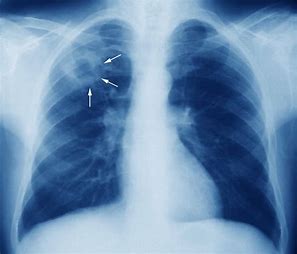Introduction
Tuberculosis (TB) is a contagious infectious disease caused by the bacterium Mycobacterium tuberculosis. It primarily affects the lungs but can also target other parts of the body, such as the kidneys, spine, and brain. TB is a significant global health concern, with millions of new cases and deaths reported each year. In this article, we will explore the key aspects of tuberculosis, including its transmission, symptoms, diagnosis, treatment, and prevention.
Transmission and Spread
TB is primarily spread through the air when an infected individual with active TB coughs, sneezes, or speaks, releasing respiratory droplets containing the bacteria. It is important to note that not everyone who is exposed to TB becomes infected. Factors such as the duration and proximity of exposure, the infectiousness of the source case, and the immune status of the individual play a role in determining the likelihood of transmission.
Signs and Symptoms
The symptoms of TB can vary depending on whether the infection is active or latent:
- Latent TB Infection: In latent TB infection, the bacteria are present in the body but are kept under control by the immune system, causing no symptoms. However, the individual may still test positive for TB infection and can develop active TB in the future if the immune system weakens.
- Active TB Disease: Active TB disease is characterized by symptoms that may include persistent cough (sometimes with blood-tinged sputum), fatigue, weight loss, night sweats, fever, and chest pain. In cases of extrapulmonary TB (TB outside the lungs), the symptoms will vary based on the affected organ.
Diagnosis
Several tests are used to diagnose TB:
- Tuberculin Skin Test (TST): This test involves injecting a small amount of tuberculin purified protein derivative (PPD) into the skin and assessing the reaction after 48 to 72 hours. A positive TST indicates exposure to TB but does not differentiate between latent infection and active disease.
- Interferon-Gamma Release Assays (IGRAs): These blood tests measure the immune response to TB antigens and can help differentiate between latent TB infection and active disease.
- Chest X-ray: An X-ray of the chest can reveal abnormalities such as lung infiltrates or cavities suggestive of active pulmonary TB.
- Sputum Tests: Collecting and examining samples of sputum can help identify the presence of TB bacteria. This may include acid-fast bacilli (AFB) smear microscopy and culture.
Treatment
TB is treatable with appropriate medication. The standard treatment regimen for drug-susceptible TB consists of a combination of antibiotics taken for a minimum of six months. The most common drugs used include isoniazid, rifampicin, pyrazinamide, and ethambutol. Adherence to the prescribed treatment is crucial to prevent the development of drug-resistant strains of TB and ensure successful treatment.
In cases of drug-resistant TB, treatment requires a more complex and prolonged regimen, often involving second-line drugs. These regimens are individualized based on drug susceptibility testing results.
Prevention
Preventing TB involves several strategies:
- Vaccination: The Bacillus Calmette-Guérin (BCG) vaccine is used in some countries to prevent severe forms of TB in children. However, its efficacy in preventing adult pulmonary TB is variable.
- Infection Control: Proper infection control measures, such as adequate ventilation, respiratory hygiene, and use of masks, can help reduce the spread of TB in healthcare settings and other congregate settings.
- Contact Tracing and Treatment: Identifying and screening individuals who have been in close contact with an infectious TB case can help detect and treat latent infection or active disease early, preventing further transmission.
- Treatment of Latent TB Infection: Treating individuals with latent TB infection, especially those at higher risk of progressing to active disease, can reduce the likelihood of developing active TB in the future.
Conclusion
Tuberculosis remains a significant global health challenge, particularly in countries with limited resources and high burden of disease. Understanding the transmission, symptoms, diagnosis, treatment, and prevention of TB is crucial for effective control and management. Early detection, prompt treatment, adherence to medication regimens, and comprehensive public health strategies are key components in the fight against tuberculosis.

